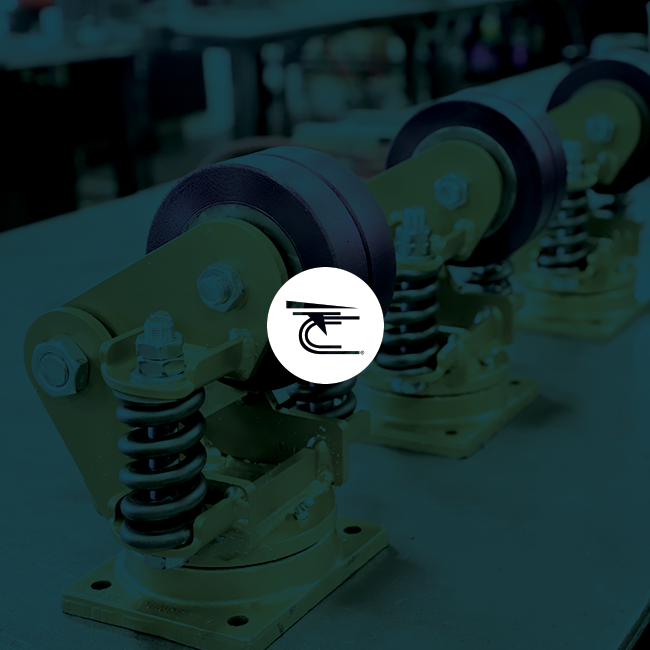

Caster flutter can be annoying on shopping carts when rushing through the store. When casters flutter in an industrial environment the problem goes from annoying to becoming a serious safety issue and not uncommonly leads to shorten life cycle and increased downtime.
I thought I would share with you a few common causes of flutter. While the list is not meant to be all inclusive it will provide you some quick thoughts at problem solving.
• Loose swivel section. If the swivel section is too loose, there is a greater likelihood for flutter. This could come from poor construction or excessive wear.
• Damage to the caster. If the caster is misaligned when attached to the cart, not installed correctly, or perhaps the caster legs have been bent, the result will likely be flutter. This occurs when the caster is not in full contact with the ground and therefore its orientation is uncontrollable. Generally these issues are quite obvious
• Higher speeds that what the caster is designed for. At slower speeds, the caster’s ability to swivel can correct the direction and can continue travel in the desired direction. But at high speeds the wheel may not be able to swivel quickly enough and the vehicle may lurch in any direction. Many times this requires involvement of the engineering staff to accommodate design for greater speeds.
Elimination/prevention steps:
• There are ways to slightly increase friction in the swivel section without impacting performance. Maintenance free casters provide a swivel section that tends to dampen excessive swiveling leading to fluttering. Friction can be our friend when it comes to prevention of flutter. In a heavy duty application, polyurethane “balls” can be placed in the swivel section to dampen the dynamics that lead to flutter. Polyurethane tires also will “grip” the floor better and dampen flutter.
• Increase the swivel lead. Swivel lead is also known as the trailing distance. This is the distance between the center line of the swivel section and the wheel axle. Extending the swivel lead will dampen the tendency to swivel and will also lessen the carry capacity of the caster. Casters are more apt to flutter if lightly loaded. Properly loading the caster is important to the overall function of the caster.
• Try slowing down! Most casters will not give flutter issues at 3-4 mph. When you get to speeds of 8-10 mph, that’s when the flutter issues become safety issues.
I hope this is helpful for you and if flutter is an issue please contact us at customercentral@casterconcepts.com to discuss a solution.